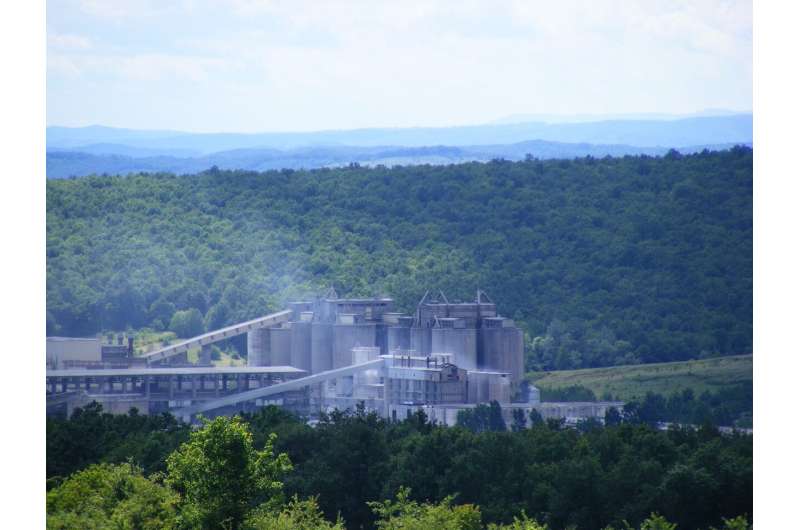This article has been reviewed according to Science X's editorial process and policies. Editors have highlighted the following attributes while ensuring the content's credibility:
fact-checked
peer-reviewed publication
trusted source
proofread
China's cement industry: Potential contributor to carbon neutrality

In a recent study published in Science China Earth Sciences, researchers from the Institute of Applied Ecology of the Chinese Academy of Sciences have unveiled new advances in the carbon capture capabilities of China's cement industry and its potential contribution to carbon neutrality.
Cement production is a significant source of human-induced carbon emissions. China accounts for more than half of the world's annual cement production. The industry's carbon emissions are estimated to be about 7% of the country's total emissions.
However, the alkaline compounds in cement materials can slowly absorb carbon dioxide (CO2) from the surrounding environment through mineral carbonation, and serve as a potential carbon sink.
In this study, the researchers conducted a comprehensive carbon sink accounting for China's cement. "Carbon sink accounting" is a method used to measure and track the amount of CO2 absorbed from the atmosphere by natural or artificial reservoirs, known as carbon sinks. These sinks can include forests, oceans, and even certain industrial materials, such as cement that can capture and store CO2 over time.
They found that from 1930 to 2021, China's cement carbon sink grew steadily. In 2021, it reached 426.77 Mt CO2 per year, which is equivalent to 2.51%–4.54% of the global terrestrial carbon sink. During this period, the cumulative carbon sequestration of cement was about 7.06 Gt CO2, offsetting 50.7% of the emissions of the cement industry (13.91 Gt CO2) during the same period.
The Intergovernmental Panel on Climate Change Guidelines for National Greenhouse Gas Inventories provide an approach for quantifying CO2 emissions from cement production, but ignore the carbon uptake by cement materials.
The researchers suggested that China should play a more leading role in the development of carbon accounting methodologies for cement. They also called for increased international cooperation on climate change to gain global recognition for China's cement carbon accounting.
The researchers believed that the cement industry has the potential to achieve net-zero emissions. They recommend that the industry can contribute to carbon neutrality goals through both technological and policy measures.
Technologically, the large-scale application of energy-saving and green production technologies, as well as the promotion of breakthrough carbon capture and storage technologies, are suggested.
On the policy front, several measures are recommended to encourage more carbon-neutral practices in the cement industry. For example, increased support for research and development would help companies develop new technologies. In addition, a ranking system based on companies' carbon emissions and sequestration capabilities would provide incentives for progress.
More information: Mingjing Ma et al, Carbon uptake by cement in China: Estimation and contribution to carbon neutrality goals, Science China Earth Sciences (2024). DOI: 10.1007/s11430-023-1276-6
Journal information: Science China Earth Sciences
Provided by Chinese Academy of Sciences





















